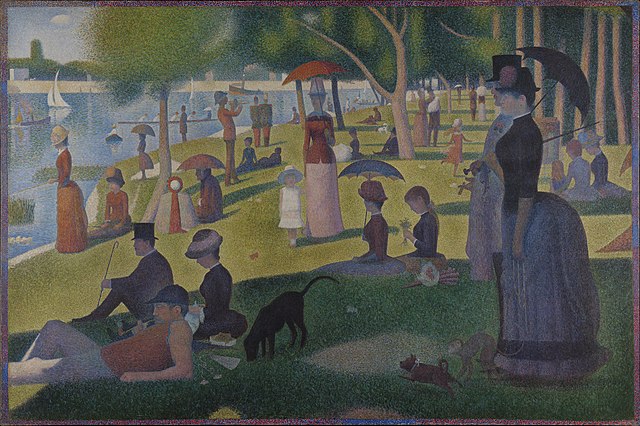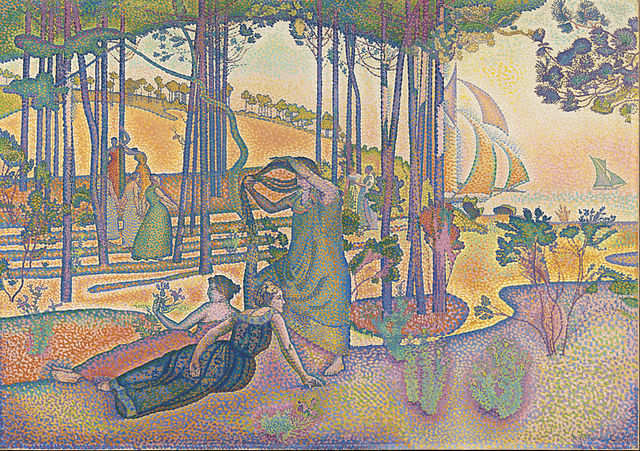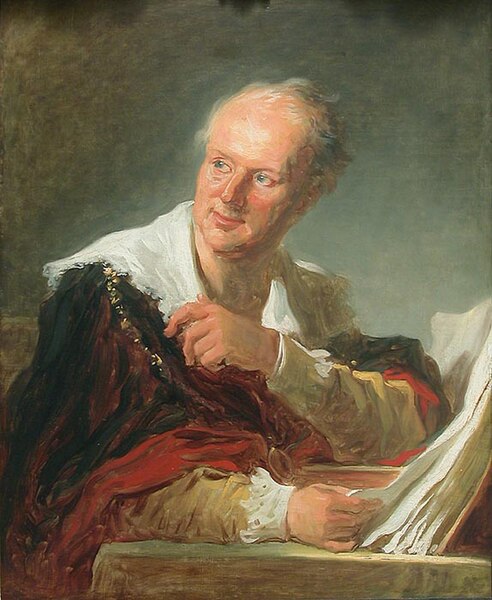Neo-Impressionism is a term coined by French art critic Félix Fénéon in 1886 to describe an art movement founded by Georges Seurat. Seurat's most renowned masterpiece, A Sunday Afternoon on the Island of La Grande Jatte, marked the beginning of this movement when it first made its appearance at an exhibition of the Société des Artistes Indépendants in Paris. Around this time, the peak of France's modern era emerged and many painters were in search of new methods. Followers of Neo-Impressionism, in particular, were drawn to modern urban scenes as well as landscapes and seashores. Science-based interpretation of lines and colors influenced Neo-Impressionists' characterization of their own contemporary art. The Pointillist and Divisionist techniques are often mentioned in this context, because they were the dominant techniques in the beginning of the Neo-Impressionist movement.
Neo-Impressionism
Paul Signac, 1890, Portrait of Félix Fénéon (in front of an enamel of a rhythmic background of measures and angles, shades and colors), oil on canvas, 73.7 × 92.5 cm (28.9 × 36.4 in.), Museum of Modern Art, New York
Henri-Edmond Cross, The Evening Air (l'Air du soir), c. 1893, oil on canvas, 116 × 164 cm, Musée d'Orsay, Paris
Georges Seurat, Le Cirque, 1891, oil on canvas, 185 x 152 cm, Musée d'Orsay, Paris
An art critic is a person who is specialized in analyzing, interpreting, and evaluating art. Their written critiques or reviews contribute to art criticism and they are published in newspapers, magazines, books, exhibition brochures, and catalogues and on websites. Some of today's art critics use art blogs and other online platforms in order to connect with a wider audience and expand debate about art.
John Ruskin (1819–1900), whom Leo Tolstoy described as "one of those rare men who think with their heart." A champion of the work of J. M. W. Turner, Ruskin detested the work of James McNeill Whistler.
Jean-Honoré Fragonard, Portrait of Denis Diderot, 1769, Louvre, Paris. His art criticism was highly influential. His Essais sur la peinture was described by Johann Wolfgang von Goethe, as "a magnificent work, which speaks even more helpfully to the poet than to the painter, though to the painter too it is as a blazing torch." Diderot's favorite painter was Jean-Baptiste Greuze.
Portrait of John Neal by Sarah Miriam Peale, 1823. Neal is regarded as the first American art critic and was also an influential writer and literary critic.
Charles Baudelaire 1855, Photo by Nadar. Baudelaire is associated with the Decadent movement. His book of poetry Les Fleurs du mal is acknowledged as a classic of French literature








